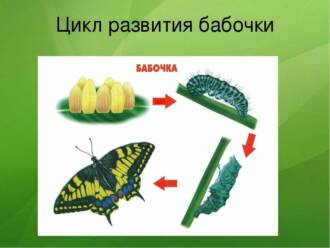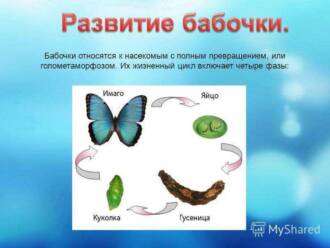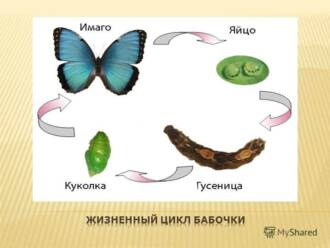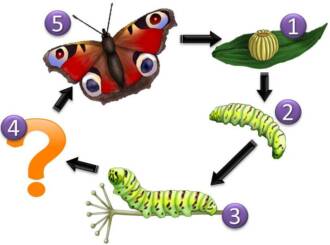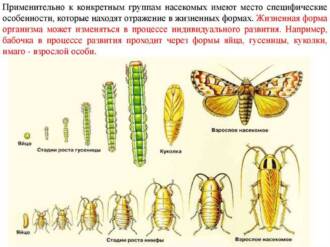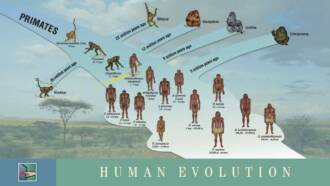
Butterflies are one of the most beautiful and amazing insects. Their life cycle consists of several phases, each of which is unique and interesting. From an egg to an adult insect, a butterfly goes through several stages, each of which has its own characteristics and tasks.
The first phase of the butterfly's life cycle is the egg stage. The butterfly lays small eggs on the leaves of plants. The eggs are usually very small and round. They can be of different colors, depending on the type of butterfly. Eggs are laid singly or in groups and are often attached to leaves or stems. In this phase, the butterfly cannot move and defend itself, so it is completely dependent on the environment and its conditions.
After the eggs hatch, the next phase begins - the caterpillar stage. A caterpillar is a young insect that has just hatched from an egg. She has a small body and a large head. The caterpillar actively feeds, eating leaves and other plant materials to gain strength and grow. In this phase, the caterpillar goes through several molts as it sheds its old skin and grows a new one. The caterpillar grows fast and gets bigger and bigger.
Butterfly development phases: from egg to adult insect

The life cycle of butterflies is an amazing process that goes through several phases of development. From an egg to an adult insect, a butterfly goes through four main stages of development: egg, caterpillar, pupa and adult.
Egg
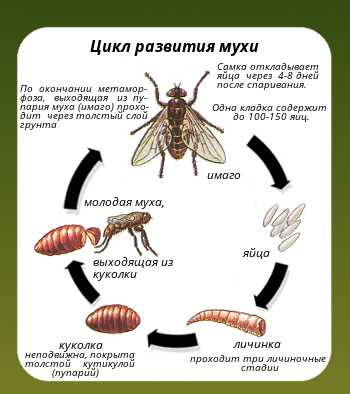
The egg phase is the first stage of butterfly development. The butterfly lays its eggs on plants, usually on the underside of leaves. Eggs can be of different shapes and sizes depending on the type of butterfly. They are usually round or oval in shape and come in a variety of colors. The eggs may be solitary or grouped in small clusters.
Caterpillar
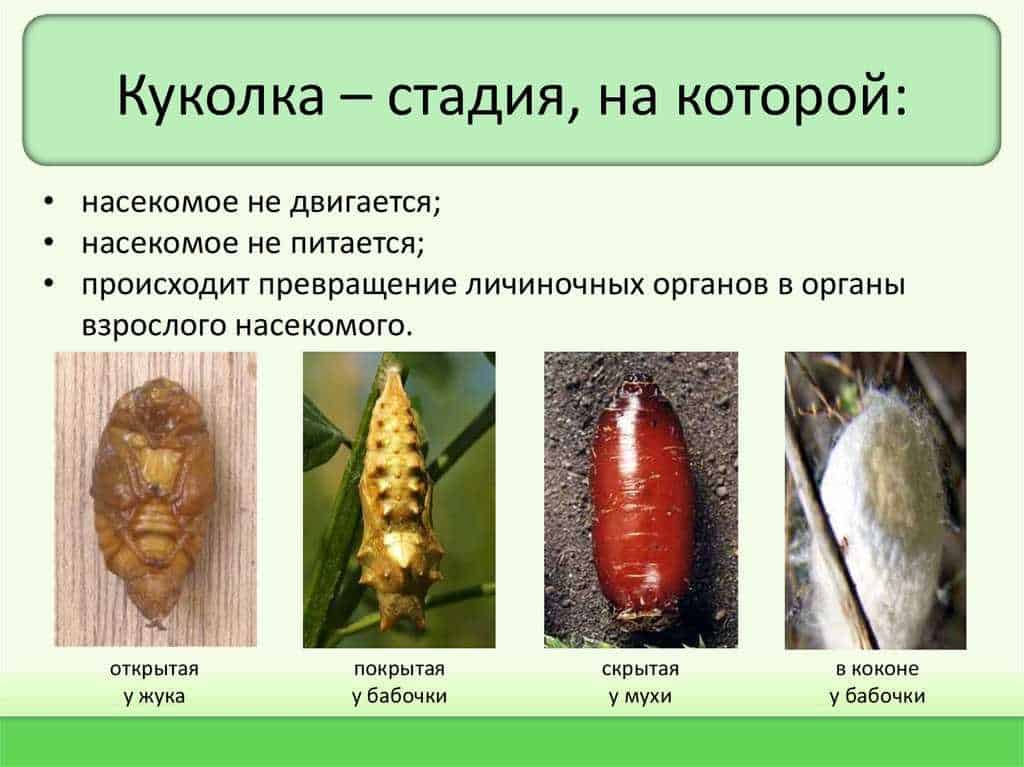
After hatching from the egg, the butterfly goes into the caterpillar stage. The caterpillar is the most active stage of development, when the butterfly grows and gains nutrients. The caterpillar has a soft body and many legs. It constantly eats the leaves of the plants on which it lives. The caterpillar goes through several stages of molting, during which it changes its appearance and size.
chrysalis
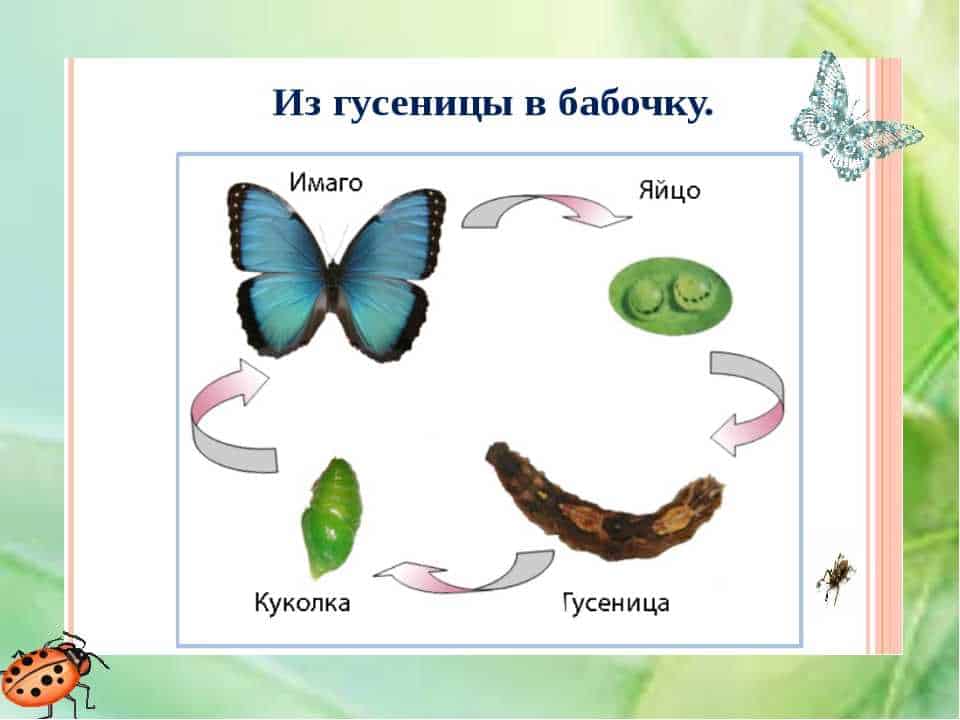
When the caterpillar reaches a certain size, it turns into a chrysalis. The chrysalis is a hard protective shell inside which the main changes occur. Externally, the chrysalis may look like a yellow-green or brown shell attached to a leaf or other surface. Inside the chrysalis, the caterpillar's body is transformed into an adult butterfly.
Imago
Imago is the stage when the butterfly emerges from the chrysalis and becomes an adult insect. At this stage, the butterfly has beautiful wings and fully developed organs. The butterfly is ready to fly and search for food. Adult butterflies usually live for several weeks or months, depending on the species. During this time, they reproduce and continue the butterfly cycle.
Beginning of life cycle: oviposition

The life cycle of a butterfly begins with the laying of eggs. After fertilization, the female butterfly looks for a suitable place to lay her eggs. She chooses a plant that will serve as food for future caterpillars. A female butterfly can lay from several dozen to several hundred eggs.
Butterfly eggs come in a variety of shapes, sizes, and colors. They are often attached to plant leaves to provide future caterpillars with access to food. Many species of butterflies lay their eggs in groups or in clusters. This provides better protection from predators and provides optimal conditions for egg development.
Butterfly eggs go through several developmental stages before becoming caterpillars. In the first stage, the eggs can be very small and inconspicuous. They can be round, oval or flat. Often the eggs have a texture or pattern that helps them hide on the plant and avoid danger.
Stage of development: hatching of the larva
At this stage of the butterfly's life cycle, the larva hatches from the egg. This stage is one of the most important and intriguing in insect development.
The hatching of the larva occurs after the egg has lain for a certain time in favorable conditions. Before hatching, the larva is already fully formed inside the egg and is ready to begin its journey to adulthood.
When the moment of hatching comes, the egg begins to crack, and a delicate and small larva emerges from it. The larva usually immediately begins to actively move and search for food, since its main goal at this stage is to collect enough nutrients for its growth and development.
The larva has special organs that allow it to penetrate inside plants and feed on their cells. She also has a protective coloration that helps her hide from predators.
At this stage of butterfly development, the larva goes through several molts, increasing its size and changing its appearance. Each molt is followed by a dormant period during which the larva undergoes important metamorphoses and prepares for the next stage of its development.
Growth phase: active nutrition and weight gain
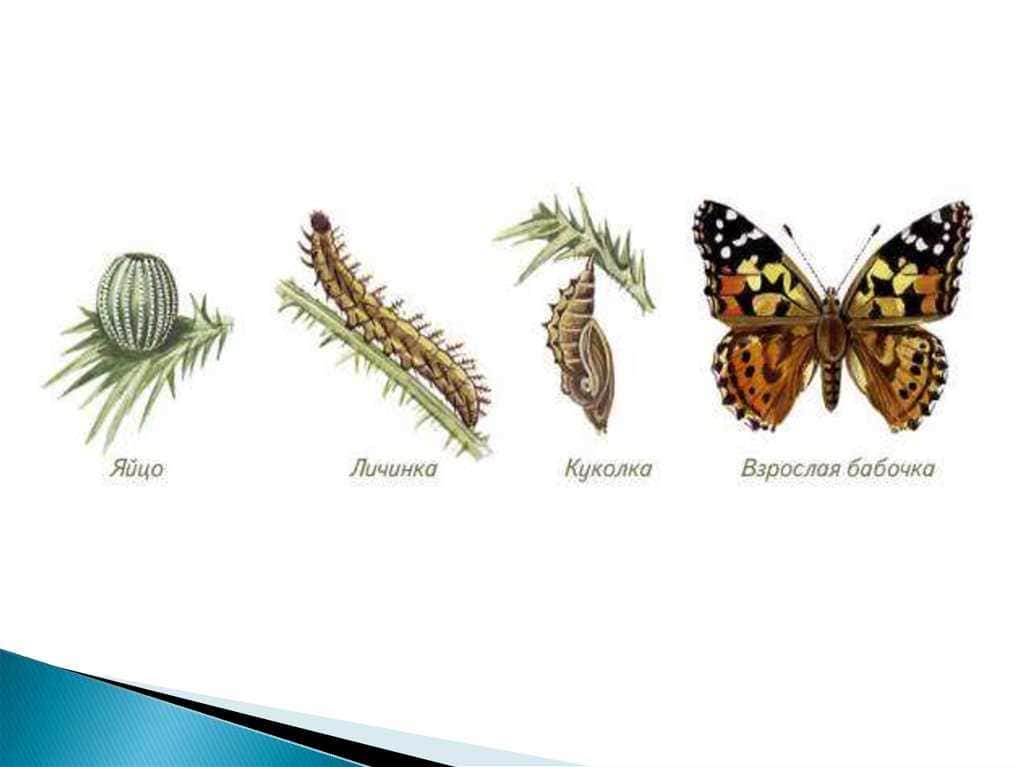
After hatching from the egg, the butterfly begins its life journey with a growth phase. During this period, the insect actively feeds and gains weight in order to develop and grow.
The main source of nutrition for butterflies is the nectar of flowers. With the help of a long and flexible snout, the insect plunges into the flower and sucks out the sweet nectar, which contains the necessary nutrients and energy.
In addition to nectar, butterflies can also feed on pollen, fruits, plant sap, and even liquid secreted by other insects. They choose food based on the availability and quality of nutrients.
During the growth phase, the butterfly actively visits various plants, moving from one flower to another. She spreads her wings and soars smoothly in the air to find a source of food. A butterfly can visit many flowers in one day in order to obtain enough food for its growth and development.
The weight of the butterfly gradually increases during the growth phase, as it actively accumulates fats and proteins necessary for the future transformation phase. Proper nutrition and weight gain during this period are important conditions for the successful development of the butterfly and its transition to the next phase of the life cycle.
Transformation process: pupa formation
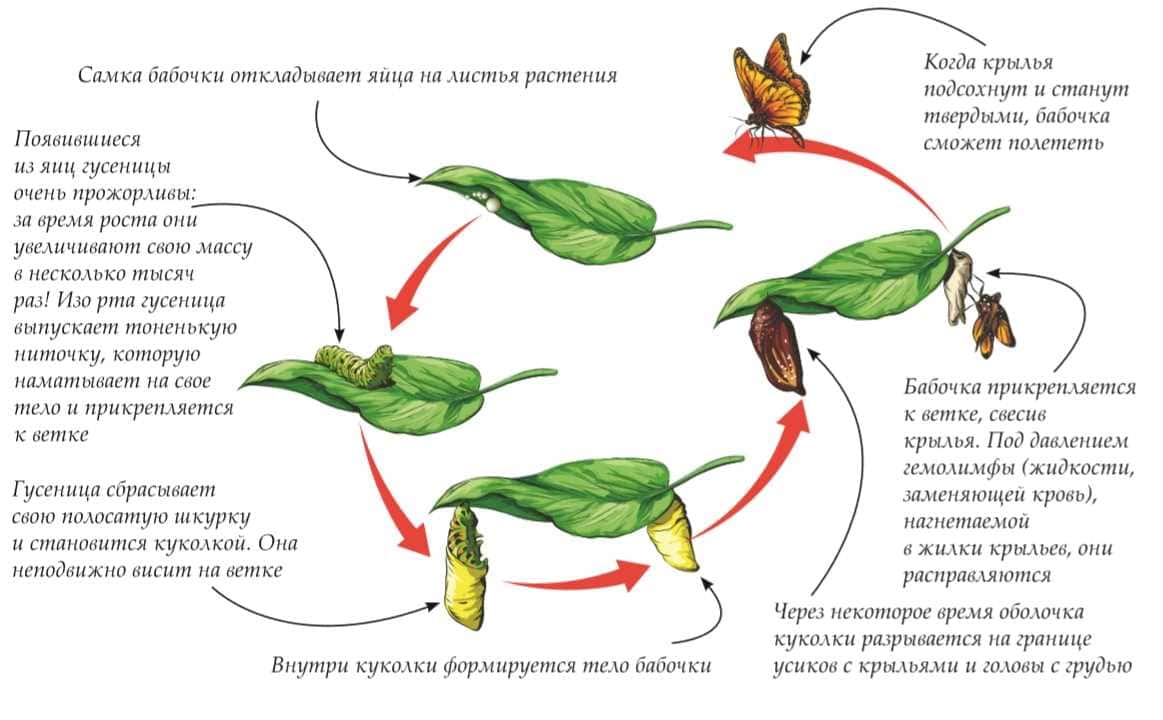
The process of transformation of a butterfly begins with the formation of a chrysalis. After the butterfly lays its eggs on suitable food vegetation, a hungry caterpillar hatches from the egg. The caterpillar begins to actively feed and grow, passing through several molts, until it reaches its last stage of development.
When the caterpillar reaches the desired size, it stops its growth and begins to look for a suitable place to turn into a chrysalis. She can choose places such as tree branches, plant stems, or even the walls of buildings. The caterpillar is fixed on the selected surface with the help of its legs or silky threads that it weaves.
The caterpillar then turns into a chrysalis. It forms a special protective sheath called scales, from which the adult butterfly will later hatch. Inside the pupa, multiple transformations and transformations take place, including the growth of new organs and the formation of wings. This process can take from several days to several weeks, depending on the type of butterfly and environmental conditions.
Transformation phase: metamorphosis inside the chrysalis
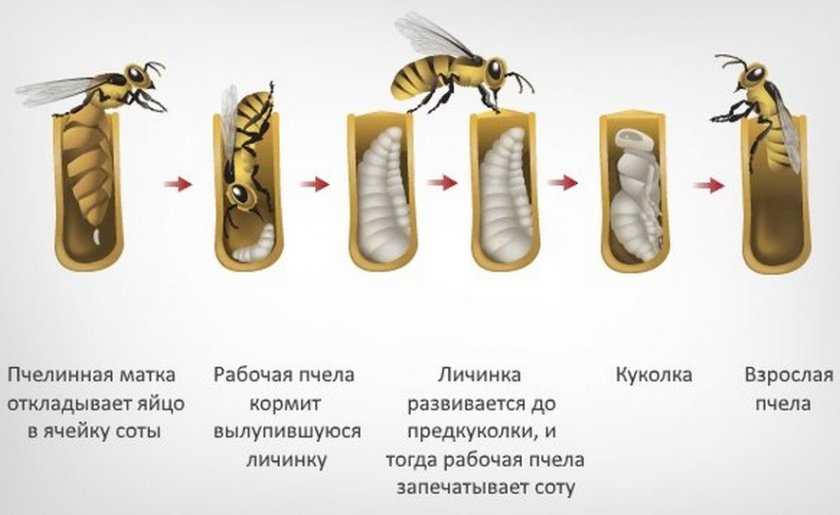
When a butterfly reaches the chrysalis stage, the phase of its most exciting transformation begins. Inside the pupa, amazing changes occur that lead to the appearance of an adult insect.
At the beginning of this phase, the butterfly's body is completely covered by a hard covering known as a chrysalis. Complex processes of restructuring take place inside the pupa. As time passes, the butterfly undergoes a metamorphosis, turning from a caterpillar into a fully developed adult insect.
The process of metamorphosis inside the pupa includes the decomposition and redistribution of the tissues, organs and systems of the butterfly. The internal organs of the caterpillar are destroyed and then completely rebuilt into a new butterfly body. This includes the formation of new organs such as wings, legs and sensitive antennae.
It is important to note that metamorphosis occurs without external nutrition. The caterpillars provide themselves with enough food before entering the chrysalis to survive this transformation period. When the metamorphosis is complete, the butterfly is ready to leave the chrysalis and begin its new life as an adult insect.
Completion of the life cycle: exit of the adult insect
After passing through all the previous stages of development, the butterfly in the chrysalis prepares for the release of an adult insect. This stage is called emergence.
When the time comes, the chrysalis begins to shake and tremble. At this time, the butterfly is already fully formed inside the chrysalis and is ready to go. When the trembling reaches its peak, the pupa splits and an adult butterfly is born.
The first minutes after emerging from the chrysalis are very critical for the butterfly, as it is in a very fragile state. In these first minutes, she must unfold her wings, which are usually folded along the body during emergence. The butterfly must also adjust to the new environment and start breathing.
Gradually, the wings of the butterfly straighten out and take shape. They become strong and capable of flight. At the same time, the insect dries up and hardens. At this point, the butterfly is ready for its first flight in a new form.

